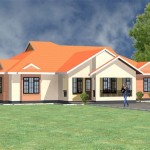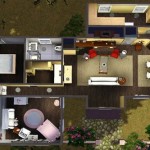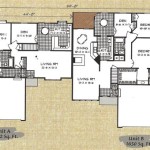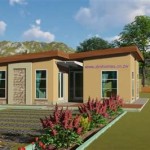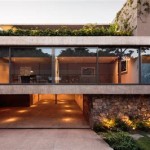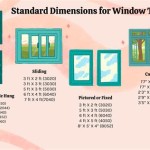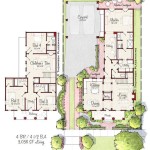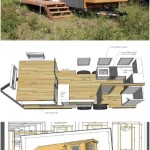Modern Prefab Home Plans
Modern prefab home plans offer a compelling alternative to traditional stick-built construction. Prefabricated homes, often referred to as modular or factory-built homes, are constructed in a controlled factory environment and then transported to the building site for assembly. This process offers several advantages, including faster construction times, reduced costs, and increased sustainability.
Key Features of Modern Prefab Home Plans:
*
Design Flexibility:
Modern prefab homes come in a wide variety of architectural styles, from minimalist and contemporary to farmhouse and traditional. Customization options allow homeowners to personalize their homes to suit individual needs and preferences. *Sustainable Construction:
Factory-built homes generate less construction waste than traditional methods, as materials are precisely cut and utilized. Furthermore, many prefab companies incorporate sustainable materials and energy-efficient features into their designs. *Cost-Effectiveness:
The controlled factory environment of prefab construction minimizes material waste and labor costs, often translating to significant savings for homeowners. *Faster Construction Timelines:
Because modules are built concurrently with site preparation, prefab homes can be completed significantly faster than traditionally built homes, reducing overall project timelines.Exploring Different Prefab Home Styles:
*
Modern Farmhouse Prefab:
This style blends the clean lines of modern design with the rustic charm of farmhouse aesthetics. Features might include large windows, open floor plans, and natural wood accents. *Minimalist Prefab Homes:
Characterized by clean lines, simple forms, and a focus on functionality, minimalist prefab designs prioritize open spaces and natural light. *Contemporary Prefab Designs:
These homes showcase innovative architectural features, often incorporating sustainable materials and smart home technology. *A-Frame Prefab Cabins:
These classic cabin designs offer a cozy and compact living space, ideal for vacation homes or smaller lots.Understanding the Prefab Construction Process:
*
Design and Planning:
The process begins with selecting a prefab home design and customizing it to meet specific needs and site requirements. *Factory Construction:
Modules are built in a climate-controlled factory environment, ensuring precise construction and minimizing weather delays. *Transportation and Site Preparation:
While modules are being built, the foundation and site utilities are prepared. *Module Assembly:
Modules are transported to the site and assembled by a skilled crew. *Finishing Touches:
Once the modules are assembled, finishing work such as exterior cladding, roofing, and interior finishes is completed.Advantages of Choosing a Prefab Home:
*
Reduced Construction Time:
The streamlined factory process significantly reduces construction time compared to traditional methods. *Cost Predictability:
Factory-built homes offer greater cost certainty, as materials and labor costs are typically fixed. *Enhanced Quality Control:
The controlled factory environment allows for greater quality control, ensuring precise construction and minimizing errors. *Sustainability:
Prefab construction minimizes material waste and often incorporates sustainable materials and building practices.Factors to Consider When Choosing a Prefab Home Plan:
*
Budget:
Determine a realistic budget that includes the cost of the prefab home, site preparation, and any necessary customizations. *Site Considerations:
Assess the site's topography, soil conditions, and access to utilities to ensure compatibility with the chosen prefab design. *Local Regulations:
Research local building codes and zoning regulations to ensure compliance with local requirements. *Lifestyle Needs:
Consider your lifestyle needs and preferences when choosing a floor plan and design features.Finding the Right Prefab Home Builder:
*
Research and Compare:
Research different prefab home builders and compare their designs, pricing, and construction processes. *Check Credentials:
Verify the builder's licensing, insurance, and experience in prefab construction. *Read Reviews and Testimonials:
Seek out reviews and testimonials from past clients to gauge their satisfaction with the builder's work. *Visit Model Homes:
If possible, visit model homes or completed projects to see the builder's quality and craftsmanship firsthand.Financing Your Prefab Home:
*
Mortgage Options:
Explore various mortgage options specifically designed for prefab homes. *Construction Loans:
Consider a construction loan to finance the building process, which can later be converted into a permanent mortgage. *Pre-Approval:
Obtain pre-approval for a mortgage to determine your borrowing power and streamline the financing process.Designing Your Dream Prefab Home:
*
Space Planning:
Carefully consider the layout and flow of the home to maximize functionality and create a comfortable living environment. *Energy Efficiency:
Incorporate energy-efficient features such as high-performance windows, insulation, and HVAC systems. *Smart Home Technology:
Integrate smart home technology for enhanced convenience, security, and energy management.
Ma Modular Modernizing The Home

Modern Prefab Home Design Ideas By Davis Frame Company

18 Inexpensive Sustainable Homes Almost Anyone Can Afford

23 Best Modular Homes

Best Prefab And Modular Homes In 2024 Review

The H House 1 Story Modern Modular Trillium Architects

Modern Prefab Homes Under 50k You Can Buy Right Now Jjchouses

Best Companies For Mid Century Modern Prefab And Modular Homes Review

Prefab Modular Homes And Buildings Weehouse Modern By Alchemy Architects

Modern Modular Homes Finding The Perfect Prefab Modularhomeowners Com

